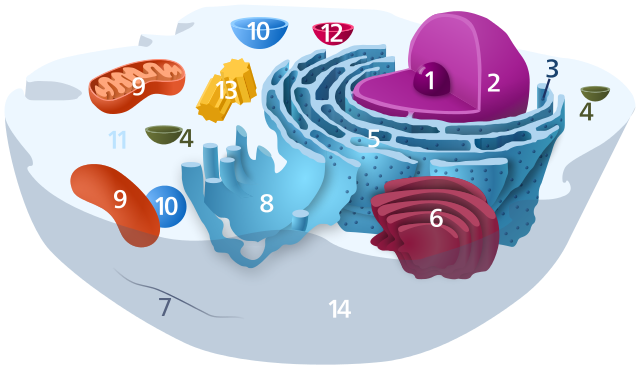
19th July 2013 Artificial organelles turn free radicals into water and oxygen Researchers at the University of Basel have developed artificial organelles – specialised subunits within a cell – that can support the reduction of toxic oxygen compounds. This could lead to novel drugs that influence pathological states directly inside living cells.
Free radicals are dangerous molecules which can disrupt normal cellular processes. They are produced within the body through various ways – as metabolic byproducts, or through environmental influences such as UV-rays and smog. If the concentration of free radicals in an organism reaches the point where the antioxidant defense mechanism is overwhelmed, the result can be oxidative stress, which contributes to aging and disease. These molecules are normally controlled by antioxidants to prevent damage. Inside the cell are various organelles (illustrated below) – specialised components with different functions – which include so-called "peroxisomes". These play an important role in regulating the concentration of free oxygen radicals.
Prof. Cornelia Palivan and her research group at the University of Basel have successfully produced artificial peroxisomes that mimic the natural organelle. The researchers developed a cell organelle based on polymeric nanocapsules, in which two types of enzymes were encapsulated. These enzymes can transform free oxygen radicals into water and oxygen. In order to verify the functionality inside the cell, channel proteins were added to the artificial peroxisome's membrane to serve as gates for substrates and products. The results show that the artificial peroxisomes are incorporated into the cell, where they support natural peroxisomes in a very efficient detoxification process. By augmenting the internal functions of cells, these implants could pave the way to a new generation of novel drugs which make patient-oriented and personalised treatments possible in the future. The results of the study are published in the journal Nano Letters.
Comments »
|








